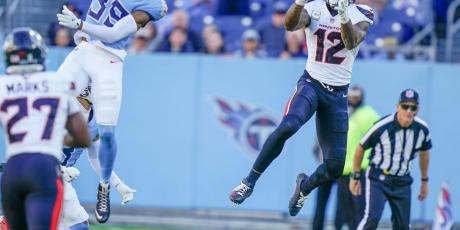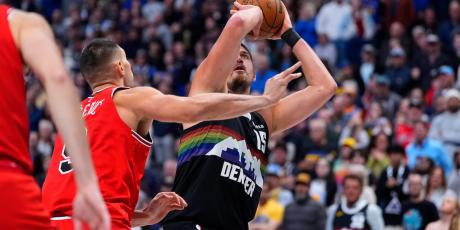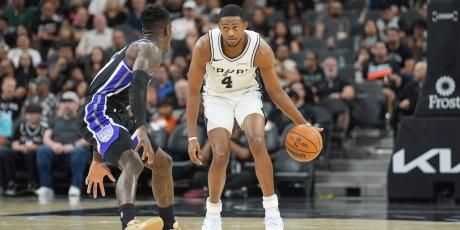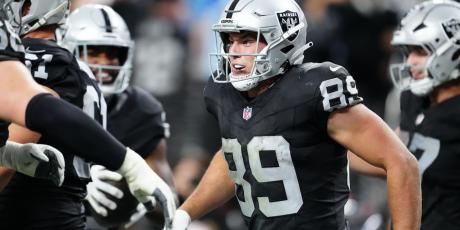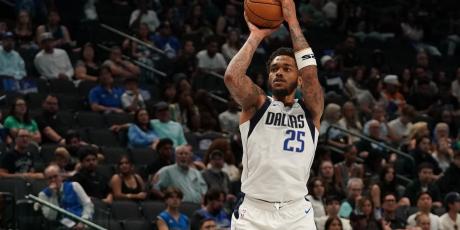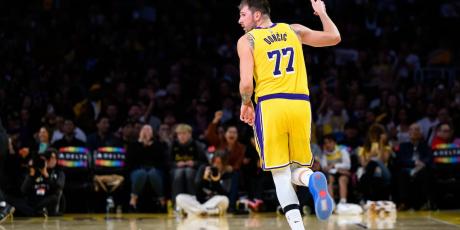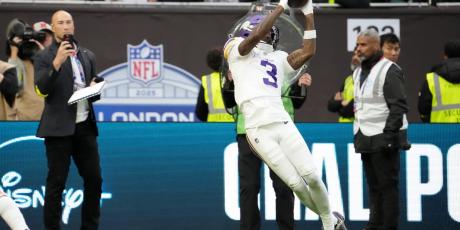TJ's #Taek: Week 14 NFL DFS Recap

Week 14’s winning lineups from the biggest contests on FanDuel and DraftKings can be used to tease out lineup-building strategies and offer clues on how you could have landed on a similar team. Reviewing your hits and misses each week is imperative if you want to be a profitable DFS player, but examining winning lineups is also a useful exercise in cultivating a winning approach.
DraftKings Week 14 Millionaire Winning Lineup
At first glance, this week’s winning lineup looks completely random, but it oddly fits many of the guidelines laid out in this space throughout the season, save the double up on cheap tight ends (more on that shortly).
Despite having three players with sub-2% ownership and six players who showed up in fewer than 10% of lineups, the average ownership of 10% was only the fourth-lowest average for a winner this season—no other winner this year has rostered two running backs in over 20% of lineups. This was just the third winner in 2020 without at least two players from the same game as their quarterback, but Fortyfortner also included two mini-stacks for a total of seven correlated players.
Although a tight end in the flex rarely offers the upside that a roster that flexes a running back or wide receiver, this is hardly the first time that we’ve seen the flex used as a complete punt simply to lower overall ownership and get up to another high-priced player. Even with a dud in a lineup, the upside of getting to another stud often offers more of a ceiling than two mid-salary players.
What Were the Indicators for the Low-Owned Plays?
All of the unique aspects of this lineup can be explained by correlation in spots that weren’t surprises for big fantasy numbers. The Raiders were in a game with an over/under above 50 and a spread of just 2.5. Las Vegas relies on the run, but they have flashed uber-efficiency via the deep ball and Nelson Algholor has been their most consistent deep target.
A.J. Brown and Tyler Eifert were used to offset Derrick Henry’s chalk ownership. The Titans carried one of the highest implied point totals of the week while their defense has been vulnerable against every position. As mentioned above, Efiert’s low salary contributed to the lineup more than his actual fantasy production.
Allen Robinson popped in 4for4’s value report going into the week, but the mid-range receivers were full of players in potential blow-up spots, leading to most of them cannibalizing each other’s ownership. David Montgomery drew high ownership numbers because of Houston’s struggles against the run, but they have been equally bad at stopping wide receivers this year.
FanDuel Week 14 Sunday Million Winning Lineup
jcle07 targeted the team with the highest implied total and second-highest cumulative passing game ownership projection, and game stacked with primary pieces from the other side. This isn’t a new concept—going into the week, 40% of 300-yard passing games this season had come from quarterbacks dueling in the same game. In addition to getting low ownership in a potential shootout, stacking the Dolphins’ side meant a low-salary stack in a week where the trend was to pay up for quarterbacks and their expensive pass-catchers.
TJ’s Final #Taek
Each week, I’ve discussed average ownership of winning lineups and that’s important to have in mind when building teams. Knowing these parameters can give you a sense if builds are too chalky or too contrarian, but it’s also critical to understand how lineups are typically being constructed in order to fall in this range of overall ownership.
Consider the average ownership for winning Sunday Million and Millionaire at each position over the entire year:
| QB | RB1 | RB2 | WR1 | WR2 | WR3 | TE | Flex | DEF | Average | |
|---|---|---|---|---|---|---|---|---|---|---|
| DraftKings Millionaire | 8.7 | 23.7 | 9.7 | 18.9 | 13.9 | 8.6 | 8.8 | 4.0 | 11.4 | 12.0 |
| FanDuel Sunday Million | 10.1 | 27.9 | 14.1 | 19.9 | 13.6 | 7.2 | 9.6 | 6.8 | 5.6 | 12.8 |
Note that there is generally a mix of some chalk with some contrarian plays. In other words, a lineup full of players with 12% ownership isn’t going to be contrarian enough to separate from a tournament field even though the overall ownership is relatively low. At the same time, players become chalk because they are usually in very good spots. It’s easy to get too caught up in being unique and miss those good spots.
These positional averages aren’t the perfect formula, but they can provide some context to what is winning in tournaments and guidance on how to build a player pool.

